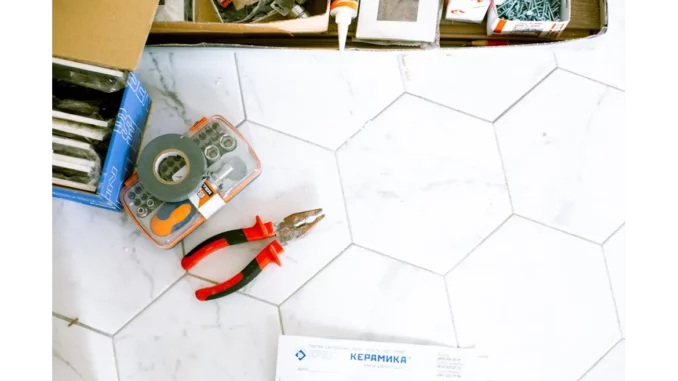
When I sat down with Emma Richards, a seasoned expatriate and self-built home enthusiast, I was eager to delve into the intricate process of building or renovating a house abroad. Emma’s experience offered a treasure trove of insights that could benefit any prospective overseas homeowner. Here’s how she navigated the journey from finding a plot of land to finalising the construction, all while managing the unique challenges that come with building a home in a foreign country.
Find out how Focus360 Energy helps with energy statements for planning.
From Plot to Plan: The Initial Steps
Emma’s journey began with finding the perfect plot of land. “I wanted a place in France,” she explains. “Their countryside is simply breathtaking, and it offered the serene environment I was looking for.” Finding the right plot was no small feat. Emma worked with a local estate agent who specialised in properties available to foreign buyers. “This was crucial,” she notes. “They knew the ins and outs of local regulations, which saved me a lot of potential headaches.”
Once the land was secured, it was time to get her finances in order. Emma opted for a self-build mortgage from a French bank, a process that required patience and thorough documentation. “It’s important to have a clear financial plan,” she advises. “Consult with both UK and local banks to explore your best options. And don’t forget to consider exchange rates and transfer fees.”
Crafting the Blueprint: The Role of Surveys and Architects
With the plot purchased and finances sorted, Emma emphasised the next critical step: the building survey. “I can’t stress enough how important a thorough survey is,” she says. “It provides a clear understanding of the land’s condition and any potential issues that might arise.”
Using the survey results, Emma enlisted the help of a local architect. “I had grand ideas,” she laughs. “But turning those dreams into reality required professional expertise.” The architect provided detailed plans, which included structural drawings and a comprehensive budget estimate. “This step is where you lay down the groundwork for everything else,” Emma explains. “A good architect will help you navigate local building codes and ensure that your plans are feasible.”
Detailed Planning: The Roadmap to Success
“Using the results of your building survey and perhaps some plans from an architect for more ambitious projects, you can create a detailed plan for your renovation or build,” Emma states firmly. This detailed plan included a timeline for each phase of construction, a list of required materials, and a breakdown of costs. “Having this roadmap was essential,” she says. “It kept me on track and within budget.”
Emma also highlighted the importance of getting planning permission and construction permits early. “This process can be lengthy and sometimes frustrating,” she admits. “But it’s vital to get these approvals before any work begins. Delays in permits can halt your project and lead to unforeseen expenses.”
Building the Dream: Contractors and Construction
With everything in place, Emma moved on to hiring local builders and contractors. “Finding reliable tradespeople is crucial,” she advises. “I started by looking at accredited bodies and getting recommendations from locals.” Emma also hired a translator to bridge any language gaps. “Clear communication is key to avoiding misunderstandings and ensuring that the work meets your standards.”
Emma’s detailed plan paid off as the construction progressed smoothly. “Each phase was meticulously scheduled,” she recalls. “From laying the foundation to the final touches, having a clear timeline kept everything on track.”
Navigating the Unexpected: Flexibility and Adaptation
Despite her thorough planning, Emma faced a few unexpected challenges. “There were some delays due to weather and a couple of changes in the design based on the site’s conditions,” she says. “It’s important to be flexible and prepared for adjustments. These situations are normal and part of the process.”
Emma’s advice for managing such changes? “Keep a contingency budget and maintain open communication with your contractors. Regular site visits, if possible, also help in monitoring progress and addressing any issues promptly.”
Final Touches: Bringing the Vision to Life
As the construction neared completion, Emma focused on the interior design and final touches. “This was the most exciting part,” she beams. “Seeing my vision come to life was incredibly rewarding.” She worked with local artisans to incorporate regional aesthetics into her home, creating a unique blend of British comfort and French charm.
Emma’s Key Takeaways
Emma’s experience offers invaluable lessons for anyone looking to build or renovate a house abroad:
- Thorough Research: Understand local laws, building codes, and financial options.
- Detailed Planning: Use building surveys and architectural plans to create a comprehensive roadmap.
- Reliable Professionals: Hire trusted local experts and maintain clear communication.
- Flexibility: Be prepared for unexpected changes and have a contingency plan.
- Patience: The process can be lengthy, but the end result is worth the effort.
Building or renovating a house abroad is a complex but highly rewarding endeavour. With careful planning and the right team, you too can turn your dream home into a reality.
By Lewis Davis


Be the first to comment